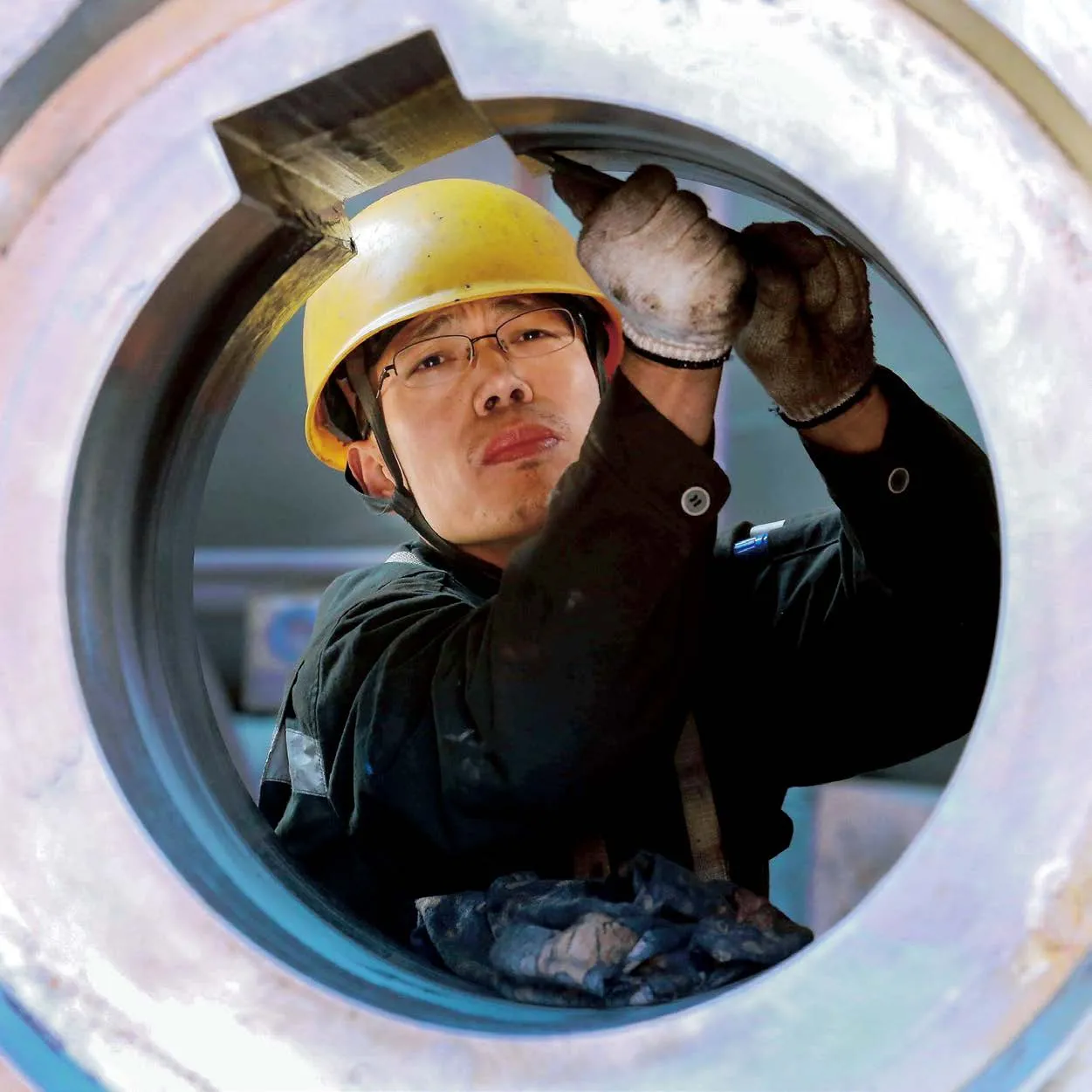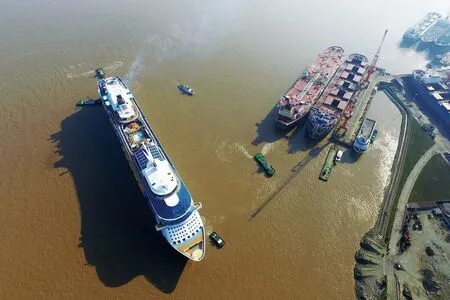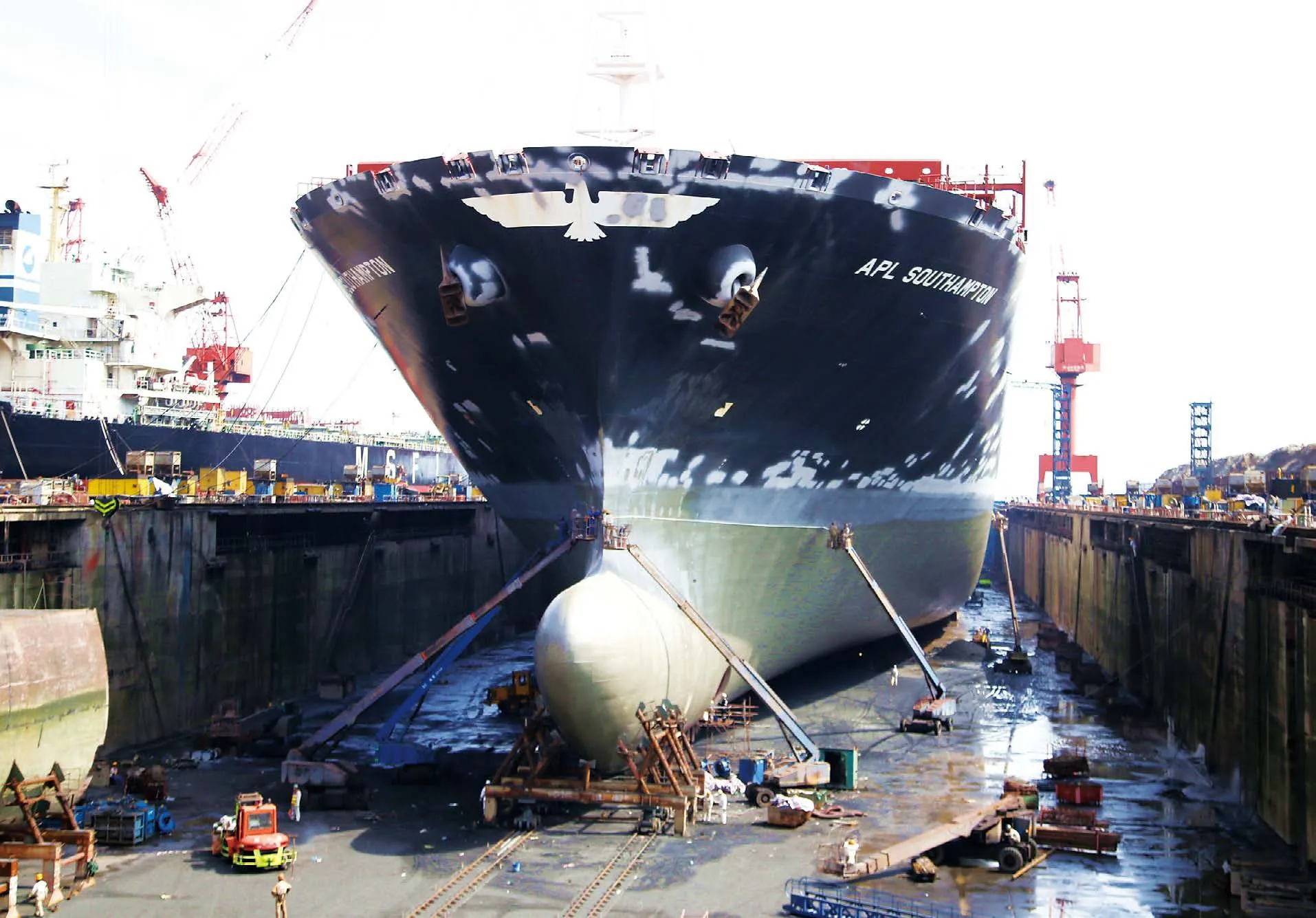Laser Empowers Ship Repair with an Important Option
Wang Jin
With the increasing applications of laser technology in traditional industry,ship repair industry is actively exploring the application of laser technology to replace related processes. Laser cleaning and laser cladding are the two most promising applications. However, industry players believe that full replacement with the new technologies face considerable difficulties. Finding the right entry point to promote collaborative innovation is an effective way to speed up the application of laser technology in the ship repair industry.
Laser Cleaning Commercially Available
Laser cleaning is a new technology based on the interaction between laser and matter. The laser beam is absorbed by the pollutant layer on the surface that needs to be treated. Large amounts of energy are absorbed into rapidly expanding plasma(highly ionized unstable gas), which in turn produces shock waves that turn pollutants into debris, which is rejected.
Liu he, director of the Innovation and Development Research Center of Youlian Shipyard (Shekou) Co., Ltd., said that compared with traditional industrial cleaning processes such as mechanical friction, chemical corrosion, sand blasting and ultrasonic, laser cleaning has no damage to substrates, no oil pollution, and low noise. It can realize precise location cleaning, long service life of laser source,no medicament and consumables, high degree of automation and so on. It can meet the needs of ship repair such as rust removal, lacquer removal, oil removal,carbon removal, oxide layer attachment and so on. It is suitable for metal,ceramics, glass, composite materials and other substrates.

Since the beginning of 2017, in order to speed up the promotion of green ship repair, the shipbuilding enterprises of China Merchants Industry Group have launched strategic cooperation with hightech enterprises of laser cleaning through joint R&D and intellectual property sharing to develop a comprehensive laser cleaning system for ships in a joint effort to promote the application of laser cleaning technology. As of December 2018, 200W, 500W and 1000W products had been released, realizing product serialization, laser head serialization,bright dipping diversification, and forming ample customization solutions to cooling,optical fiber transmission, and automation matching. The equipment was repeatedly tested in the electromechanical workshop,covering 20 application scenarios and 8 shaped parts. Except for the low removal efficiency of deep rust of carbon steel and the difficulty of cleaning the cavity which can not be irradiated by laser, the laser cleaning can almost be used for the other cleaning tasks.
Laser Cladding Application Extendable
According to Deng Qilin, an associate professor with the School of Mechanical and Power Engineering at Shanghai Jiaotong University, laser cladding is done by adding new alloy powders to the surface of damaged part and using high-energy density laser beams to fuse them with the part substrate, forming a metallurgical bonded cladding layer on the surface of the part. Compared with electroplating and spraying technology, laser cladding repair has less deformation, stronger adhesion,wider material selection range, better coating performance, no waste gas, waste water and waste slag discharge.

At present, laser cladding technology is mainly used in repairing diesel engine, workpieces in the propulsion system and other pumps,valves and shafts in the ship repair sector.Zhang Hongliang, senior project manager of Guangzhou Tiger Laser Technology Co., Ltd., said that marine crankshaft features irregular shape, complex working conditions, high cost and long manufacturing cycle, with journal wear,crack, scratch, corrosion and burn as common damages. In the general repair process, the downgrade use (thickening tile)will reduce the output power, electroplating process does not meet the requirements of environmental protection, spray welding process is easy to cause deformation, iron plating process will cause non-repeatable repair. These problems do not exist in laser cladding technology.
Looking forward to the application of laser cladding technology in ship repair,Zhang Hongliang said that laser surface modification strengthening, laser field repair, laser high speed cladding, laser 3D printing still have room for expansion.For example, the surface properties of workpieces can be customized by using functional materials, and the surface properties of parts can be completely changed, and the service life of repaired products can be greatly extended by the idea of “remanufacturing”.
Collaborative Innovation Speeds up Application
The application of laser technology is undoubtedly an important option for upgrading the ship repair industry.According to an analyst of the industry,the external environment of Chinese ship-repairing enterprises has changed,and the requirements for ship-repairing enterprises are becoming more and more strict under the relevant laws and regulations such as environmental protection and occupational health.China's ship-repairing industry has once again sounded the alarm bell of environmental protection, and domestic ship-repair enterprises are facing enormous pressure for environmental protection rectification. In 2017, out of 191 ship-repair enterprises in Anhui Province, 94 enterprises suffered from incomplete procedures for dismantling qualifications, and obsolete facilities and equipment, and backward craftsmanship,7 enterprises stopped production and shut down, while the remaining 90 enterprises were working hard to rectify and reform.
However, there are many obstacles to the application of laser technology.“It is only when the traditional process cannot be repaired that will the shipbuilding enterprises think of sending the components to the relevant laser companies for repair,” an industry figure says, due to high cost of laser technology,small and unstable are unaffordable business, laser cladding processing prices for shipbuilding enterprises are“unaffordable”. In addition, the application of laser technology also needs to solve some technical problems, such as improving efficiency and realizing workshop field processing.
Industry sources suggest that promoting the establishment of industrial technology innovation alliance is an effective means to speed up the application of laser technology in the shipbuilding industry. Only when shipowners, shipyards, service providers,equipment manufacturers, material dealers and research institutes are jointly developed, with complementary advantages, shared benefits and shared risks, can they break through the technological bottleneck of industrial development. At the same time, it is necessary to find the breakthrough point of laser technology and shipbuilding production, grasp the core technology and establish standards and norms.


